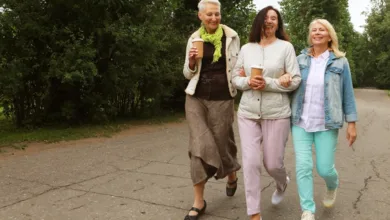
Moving to assisted living is a big decision. It can be challenging to know when the time is right. This choice affects not just the person moving out of their home but also their family.
Let’s look at some key signs that show it’s time to consider assisted living.
Safety Concerns at Home
As we get older, our homes can become harder to navigate. Stairs that were once easy to climb might now pose a risk. Bathrooms can be slippery. Even getting in and out of bed might become a challenge.
Are there signs of falls or near-misses? Has cooking become dangerous due to your loved one forgetting to turn off the stove? These are red flags. They suggest that living alone might no longer be safe.
An assisted living facility is designed with safety in mind. They have features like grab bars, emergency call systems, and staff available around the clock. This setup can provide peace of mind for both seniors and their families.
Declining Health or Mobility
Health issues often creep up slowly. At first, they might seem manageable. But over time, they can make daily life increasingly difficult.
Do basic tasks like bathing, dressing, or taking medications feel overwhelming? Is it hard to keep up with doctor’s appointments? These struggles can be signs that more support is needed.
Assisted living offers help with these daily activities. Staff can assist with personal care, manage medications, and even provide transportation to medical appointments. This level of care can greatly improve the quality of life for those facing health challenges.

Isolation and Loneliness
Human connection is vital at any age. However, isolation can be a serious problem for seniors. It can lead to depression and even impact physical health.
Has socializing become rare? Are friends and family visits few and far between? This isolation might be due to difficulty driving, health issues, or living far from others.
Assisted living communities offer built-in social opportunities. There are group activities, communal dining areas, and chances to make new friends. This social environment can be a big boost to mental and emotional well-being.
Neglected Home Maintenance
Keeping up a house takes work. Tasks like lawn mowing, fixing leaky faucets, or even regular cleaning can become too much as we age.
Is the home starting to look neglected? Are repairs piling up? This might mean the owner needs help managing household responsibilities.
In assisted living, these worries disappear. Maintenance, housekeeping, and laundry services are typically included, freeing time and energy for more enjoyable activities.
Caregiver Stress
Sometimes, family members step in to help their aging loved ones. While this can work for a while, it often leads to burnout, which can affect mental and physical health.
Are family caregivers feeling overwhelmed? Is the stress affecting their health or relationships? It might be time to consider professional help when caregiving becomes too much.
Assisted living can provide the necessary care while allowing family members to return to their roles as sons, daughters, or spouses rather than full-time caregivers.

Financial Considerations
Money matters when it comes to long-term care decisions. Sometimes, in-home care or maintaining a house costs more than assisted living.
Are home care services, property taxes, and maintenance costs adding up? Comparing these expenses to the all-inclusive cost of assisted living might be worth investigating.
Many assisted living communities offer a range of services for a single monthly fee, including meals, utilities, activities, and care services. For some, this bundled approach can be more economical in the long run.

Nutrition Concerns
Proper nutrition is crucial for health, especially as we age. However, cooking nutritious meals can become challenging.
Is the refrigerator often empty or filled with expired food? Are meals being skipped or replaced with unhealthy snacks? Poor nutrition can lead to a host of health problems.
Most assisted living facilities provide three meals daily, often with menu choices. and catering to special dietary needs. This ensures residents get the nutrition they need without the hassle of shopping and cooking.
Loss of Driving Ability
Giving up driving is a big change. It affects independence and can make daily tasks much harder.
Is it no longer safe to drive? Has this led to missed appointments or difficulty running errands? Lack of transportation can quickly lead to isolation and neglect of important tasks.
Assisted living communities often provide transportation services, including trips to medical appointments, shopping centers, and social outings, helping residents maintain independence without the need to drive.
Starting the Conversation
If you notice several of the above signs, it might be a good time to start talking about assisted living. It may be emotional, but beginning the conversation early, before a crisis forces a rushed decision, is best for your loved one.
Visit different facilities to get a feel for what they offer. Many places allow short-term stays, which can be a good way to test the waters.

Final Thoughts
Moving to assisted living is a big step, but it doesn’t have to be negative. The right community and timing can open the door to a new chapter filled with additional support, social connections, and peace of mind.
The decision to move to assisted living is deeply personal and depends on individual circumstances, preferences, and needs. By recognizing the signs and having open discussions, families can make informed choices prioritizing safety, health, and quality of life.





